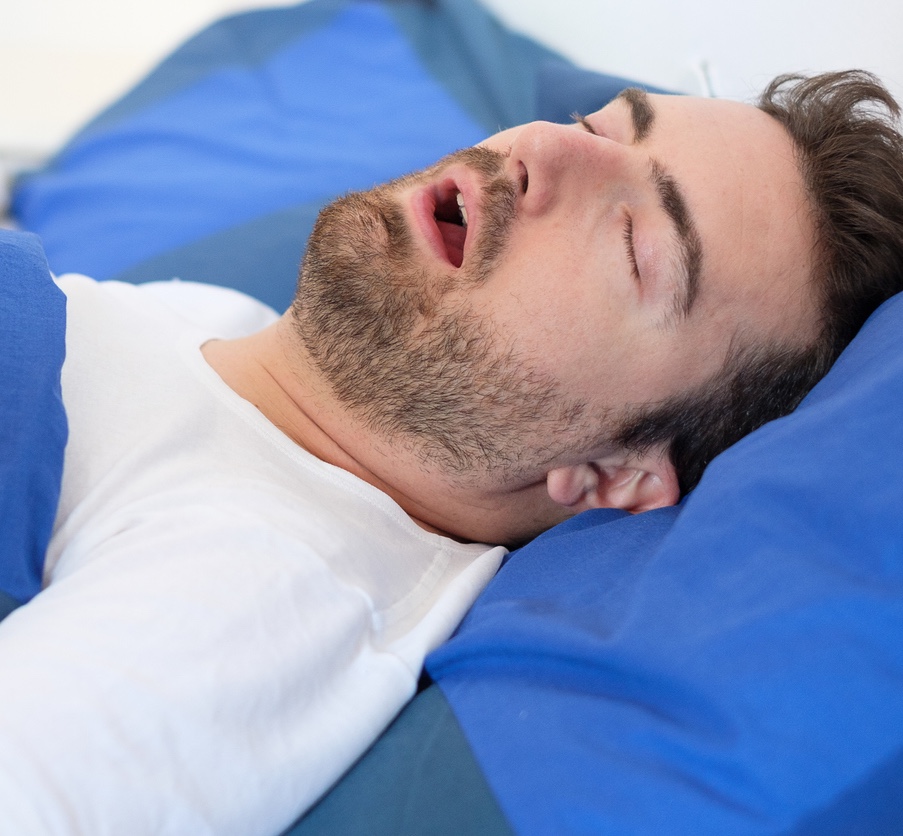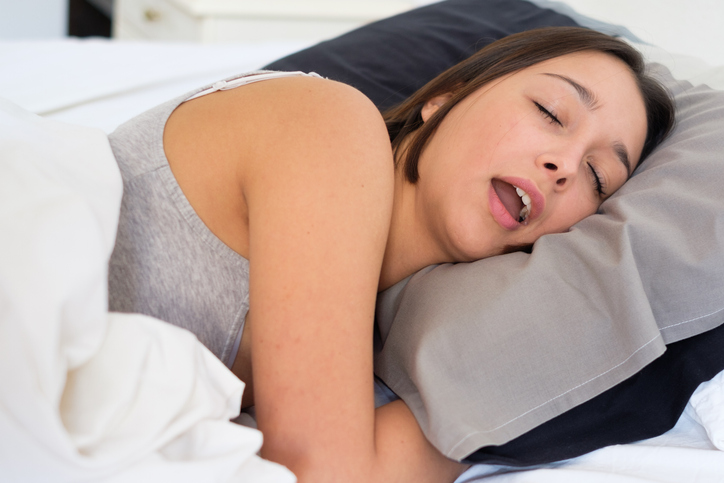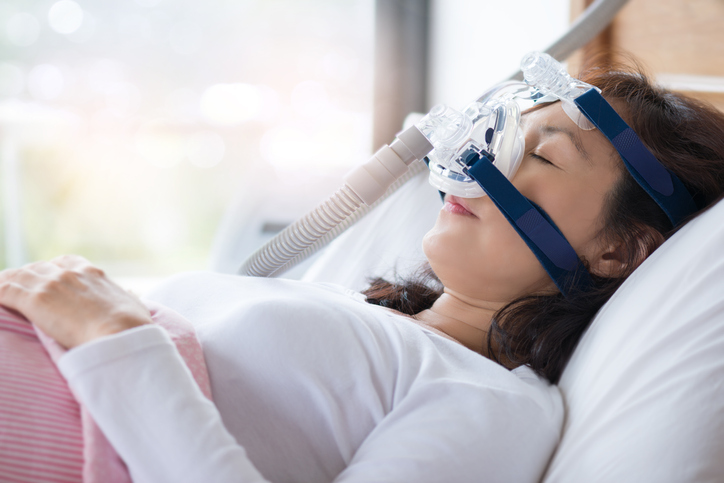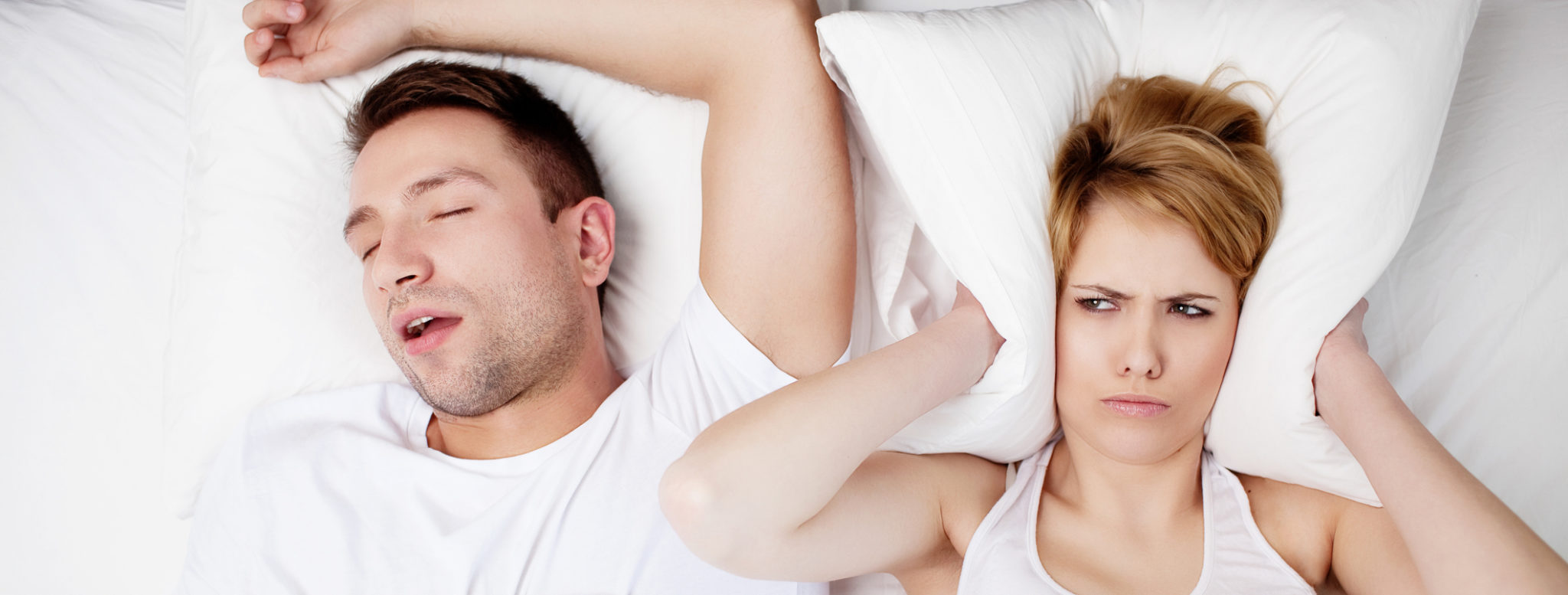Sleep Apnea Treatment Simi Valley, CA
Some people think sleep apnea is nothing more than frequent snoring. That’s a misperception that can hurt you. When a person suffers from sleep apnea, sagging tissues in the throat or on the back of the throat block the upper airway and the airflow ceases. When this occurs the brain senses the lack of oxygen and it sends out an alarm of sorts, instantly waking the person to open the throat and restart breathing. This back and forth between the blockage and the brain awakening the person can happen dozens, even hundreds of times per night. The person may never rouse from sleep to the degree that he or she remembers it. But this lack of consistent sleep takes a toll on the person’s health. These effects go far beyond grogginess the next day at work; they can lead to high blood pressure and even cardiovascular problems.
What Causes Sleep Apnea?
In common snoring, the person has some degree of interference with the airflow. That makes the snoring noise. Sleep apnea is not interference, but blockage of the airflow. Snoring can be linked to temporary causes, such as congestion or excess drinking. Sleep apnea isn’t usually a passing thing.
Sleep apnea can have varied causes:
- Throat and tongue muscles that are abnormally relaxed
- Enlarged tonsils or adenoids
- Aging
- Cardiovascular problems
- Obesity
- Nasal congestion
- Smoking
- Family history
The obstructive form of sleep apnea occurs when the muscles in the back of the throat relax. These muscles support all of the surrounding tissues such as the tonsils and the sidewalls of the throat. When the muscles relax, the airway narrows or closes. Your brain senses this inability to breathe and briefly wakes you from sleep to reopen the airway. These lapses in sleep can be so brief you don’t even remember them. These actions can involve a snorting, choking, or gasping sound and can repeat the pattern up to 30 times per hour all night.
In central sleep apnea, your brain doesn’t tell your breathing muscles to do their job. Consequently, you make no effort to breathe for a short time. You then awaken with shortness of breath or have difficulty even falling asleep. Central sleep apnea is far rarer than the obstructive form.
What are the Effects of Sleep Apnea?
Patients often discount their sleep apnea when discussing it with Dr. Bankhardt, thinking it’s just a little snoring. Reality points to a more involved health issue — if left untreated, it can lead to some very serious health concerns:
- High Blood Pressure — Because you wake up over and over during the night, this process places stress on your body, activating your hormone systems. This raises your blood pressure.
- Heart Disease — People with OSA are more likely to have heart attacks, strokes, and atrial fibrillation.
- Type 2 Diabetes — Sleep apnea is common in people with type 2 diabetes. This is because when your body is tired it has trouble effectively processing insulin.
- Weight Gain — Sleep apnea can make your body release more of the hormone ghrelin, which makes you crave carbs and sweets.
- Adult Asthma — Adult asthma and sleep apnea combined tend to cause the patient to suffer from more asthma attacks.
- Car Accidents — People with sleep apnea are up to five times more likely than normal sleepers to have traffic accidents, and to even fall asleep at the wheel.
Am I a Good Candidate for Sleep Apnea Treatments?
Candidates for treatment with Dr. Bankhardt shouldn’t discount the seriousness of this condition, as evidenced by the health concerns addressed above. Good candidates should be cognizant as to how their sleep apnea is affecting their sleep and their daytime quality of life. The human body needs long periods of uninterrupted sleep to perform necessary maintenance functions, such as cell turnover and tissue repair. Research has even shown the body works to clean out cells in the brain during sleep.
Often a partner will be the one to tell the person sleeping next to them about what is going on. Once this happens, then symptoms such as continual daytime grogginess and irritability will make more sense.

- Neck Circumference — People with thicker necks often have narrower airways (men 17 inches and larger, women 15 inches and larger).
- Obesity — Obese people have four times the risk of sleep apnea. Fat deposits around the upper airway can add to obstruction.
- Narrowed Airway — Some people simply have a naturally narrow throat, or have enlarged tonsils or adenoids.
- Men — Men are twice as likely to have sleep apnea.
- Age — Sleep apnea is more common in older adults.
- Family History — Sleep apnea runs in families.
- Smoking — Smokers are three times more likely to have obstructive sleep apnea.
- Alcohol or Sedatives — These substances relax the throat muscles.
What can I do to stop my Sleep Apnea?
The first steps in treating sleep apnea involve actions the patient will need to take. These are known as prevention strategies. Dr. Bankhardt usually starts treatments with these conservative measures first:
- Lose Weight – The increasing girth of the average American is directly related to the rise in sleep apnea. More weight means more tissue in the back of the throat that can come down and block the airway. Even a slight weight loss can relieve constriction in your throat. Getting to your ideal, healthy weight may be all you need to do to open up your airway.
- Exercise — Moderate activity, such as brisk walking, for 30 minutes a day can relieve some symptoms.
- Avoid Alcohol, Sleeping Pills, and Tranquilizers — These all relax the muscles in the back of the throat, allowing the sagging that leads to sleep apnea.
- Sleep on Your Side or Abdomen, Not Your Back — Sleeping on your back can cause your tongue and soft palate to rest against the back of your throat, blocking your airway. There are some commercial devices that vibrate when you roll onto your back in sleep.
- Don’t Smoke — Smokers are three times more likely to have obstructive sleep apnea
See What Our Patients Are Saying!
“My family has been patients of Dr. Bankhardt and his outstanding staff for 25 years. I have highly recommended them to friends. He and his staff are kind and courteous, and always take extra measures to insure our dental care is as pain free as possible.” – Bernadette C. (Patient since 2019)
To read more patient reviews, click here!
Diagnosing Sleep Apnea

Sleep Apnea Treatments
If the conservative measures noted don’t seem to alleviate your sleep apnea, the next step for Dr. Bankhardt will usually be oral appliance therapy or CPAP. Severe cases, where the patient is in danger of developing serious medical conditions such as an elevated risk of stroke or heart attack, may require surgery to remove excess tissue, to realign the septum, or to move the jaw into proper position.
- Oral Appliance Therapy – Dr. Bankhardt can custom fit one of dozens of different oral appliances to treat your sleep apnea. These are similar to a sports mouthguard or an orthodontic retainer. The patient wears the appliance only during sleep and it supports the jaw in a forward position to help keep the upper airway open. These can be very effective for mild to moderate sleep apnea.
- CPAP (continuous positive airway pressure) – The most popular treatment for OSA. This is a breathing system that uses air pressure to keep the upper airway passages open. The patient wears a mask over his or her nose during sleep. The mask delivers air pressure that is somewhat greater than the air pressure in the bedroom. This difference in pressure keeps the airway passages open, preventing snoring and apnea.
Is Surgery Ever Used for Sleep Apnea?
If a patient’s sleep apnea is moderate to severe and is impacting their quality of life adversely, surgery may be necessary to improve the airflow. Surgery is usually an option if other sleep apnea treatments have failed to improve the patient’s symptoms. Here descriptions of various potential procedures:
- Uvulopalatopharyngoplasty – Uvulopalatopharyngoplasty surgery treats OSA by tightening the tissue in the throat and palate to expand the passageways. It may also include the removal of the tonsils and adenoids.
- Maxillomandibular Advancement – During a maxillomandibular advancement procedure, the upper and lower parts of the jaw are moved forward to create more space behind the tongue and soft palate and reduce the risk of obstruction during sleep. Breathing is restored as the path for airflow is cleared.
- Tracheostomy – Often performed after other treatments have failed, a tracheostomy involves inserting a metal or plastic tube into the throat to help the patient breathe during sleep. The opening remains covered during the day but helps air pass directly in and out of the lungs during sleep. Tracheostomy is reserved for severe, life-threatening cases of sleep apnea.
- Genioglossus And Hyoid Advancement – Genioglossus and hyoid advancement procedures are frequently used to treat sleep apnea. The surgical procedure prevents the collapse of the lower throat by pulling the tongue muscles forward, which opens the obstructed airway.
- Septoplasty And Turbinate Surgery – Nasal septoplasty reduces resistance to airflow through the nose. It repairs and straightens the bone and tissue separating the two nasal passages, as well as the layers of spongy horizontal bones, or turbinate, which are located inside the nasal cavity.
- Thermal Ablation Palatoplasty – Thermal ablation palatoplasty (TAP), is a group of procedures used to treat snoring and sleep apnea. During these procedures, an electric current is used to cut away obstructive tissue in the airway and roof of the mouth, or to shrink and stiffen obstructive areas in the rear of the mouth and the uvula. Radiofrequency ablation is used to emit energy to shrink excess tissue.
How Many Treatments Will I Need for My Sleep Apnea?

There is no “correct number” of treatments. This can involve some trial and error to pinpoint the best solution.
Sleep Apnea Treatment Results
The goal for Dr. Bankhardt when treating all of his sleep apnea patients is a good night’s sleep. That’s it. Patients are amazed at the changes in how they feel, how much more energy they have, how alert they seem — all because their bodies can now fully recharge at night. Sleep apnea doesn’t need to be an ongoing, chronic problem for anyone.
If you are interested in learning more about sleep apnea or would like to schedule an appointment with Dr. Bankhardt, call our Simi Valley office at (805) 584-1194 or click the button below to fill out our contact form today! We proudly serve patients from Simi Valley and surrounding areas, including Chatsworth, Moorpark, Thousand Oaks, Westlake Village, and Northridge.


